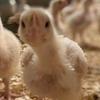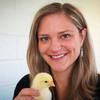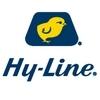Explore all the information on
Poultry management
Poultry management usually refers to the husbandry practices or production techniques that help to maximize the efficiency of production. Sound management practices are very essential to optimize production. Scientific poultry management aims at maximizing returns with minimum investment. A carefully controlled environment that avoids crowding, chilling, overheating, or frightening is almost universal in poultry farming. Cannibalism, which expresses itself as toe picking, feather picking, and tail picking, is controlled by debeaking at one day of age and by other management practices. The feeding, watering, egg gathering, and cleaning operations are highly mechanized. Birds are usually housed in wire cages with two or three animals per cage, depending on the species and breed, and three or four tiers of cages superposed to save space. Cages for egg-laying birds have been found to increase production, lower mortality, reduce cannibalism, lower feeding requirements, reduce diseases and parasites, improve culling, and reduce both space and labour requirements.
Walking on eggshells - assessing anxiety in chickens Extension collaborative for the poultry industry -Attention bias...
Comments : 0
Recommendations: 0
In poultry farming, worms and protozoa represent the two primary classes of internal parasites that impact bird health, welfare, and productivity. While indoor-reared poultry typically avoid infestation from worms that require intermediate hosts, free-range birds are more susceptible. Interestingly, broilers tend to...
Comments : 0
Recommendations: 0


Broiler trial in the Netherlands confirms 2018 EFSA scientific opinion on methionine sources while validating the experimental approach
Suggested link
Introduction Animal welfare pertains to the quality of life of an animal, denoting the cumulative positive and negative experiences of an animal 1 . The welfare of farmed animals impacts their development and productivity, shaping both...
Comments : 0
Recommendations: 1
Enrichment is the process of improving the environment of an animal, to meet their behavioral needs and ultimately improve their welfare. Enrichment helps to reduce stress and improve welfare by providing physical and mental stimulation, encouraging highly-motivated species specific behaviors, allowing the animal more control over their...
Comments : 0
Recommendations: 0
Housing systems for laying hens in the United States (and more broadly across the world) are transitioning away from conventional cages to cage- free systems....
Comments : 1
Recommendations: 0
This issue will cover: -What are behavioral needs? -What is dustbathing? -Dustbathing in commercial housing systems Substrate...
Comments : 0
Recommendations: 0
By PSA Executive Director Andy Vance
Where has the year gone?!? As trite as it feels to write that, my head is spinning with how fast the year has gone for our Association. Through the first seven months of 2025, we’ve seen tremendous growth, with increased...
Comments : 0
Recommendations: 1
In this issue: Introduction to the gut microbiome The function of prominent bacterial phyla Introduction to the gut-brain axis How microbial imbalance affects poultry welfare Practical strategies to improve the gut health of poultry What is the gut...
Comments : 0
Recommendations: 0
CHAMPAIGN, Ill. – The Poultry Science Association (PSA) is pleased to announce the newly elected members of its Board of Directors, introduced during the 114th PSA Annual Meeting held July 14–17, 2025, in Raleigh, North Carolina.
The new board members bring a wealth of...
Comments : 3
Recommendations: 3
Champaign, IL - The Poultry Science Association (PSA) concluded its 2025 Annual Meeting & Scientific Conference in Raleigh, North Carolina, marking another milestone in fulfilling the Association’s mission of aiding in the discovery, dissemination, and application of the poultry sciences. More than 1,200...
Comments : 0
Recommendations: 1
.jpg&w=3840&q=75)

Mycotoxin detection: VICAM builds a stronger and more sustainable future for food
Suggested link
Extensive research has investigated the effects of production systems on egg quality; however, confounding problems exist with many of the experimental designs (Chung and Lee, 2014). Insufficient consideration is given to the influence of genotype, hen age, ambient temperature and stress on egg quality. Eliminating the ambiguity created by these effects is crucial when evaluating the effect of production system on egg quality. The present study aims to identify limits to the hen age, so that...
Comments : 0
Recommendations: 0
I. INTRODUCTION Production improvements in commercial meat chickens via genetic selection and improved husbandry have resulted in rapid growing birds. These birds have endemically reduced locomotor ability; a conservative estimate is that 30% of birds in a flock are likely to have poor mobility (Knowles et al, 2008). Leg weakness has a direct impact on production due to lower bird quality, which may result in culls or condemnation of carcasses. While not well understood, early rapid...
Comments : 0
Recommendations: 0
I. INTRODUCTION In Australia, the National Animal Welfare Research Development and Extension (RD&E) Strategy is a cross-sectoral strategy under the National Agricultural RD&E Framework. Each of the livestock industries in Australia, including the egg industry, is represented by this National Strategy, which is active in identifying the key areas of importance for the welfare of livestock. Over the last four to five years, in particular, this National Strategy has consistently...
Comments : 0
Recommendations: 0
I. INTRODUCTION Agricultural industries are on the cusp of a digital revolution. Rising demand for higher yields, combined with constraints on finite resources such as land and water, has placed increased pressure on the input side of agriculture. The increased demand on agricultural outputs from an increasing global population and socioeconomic growth has intensified the pressure on the agricultural sector to produce more with less. Current projections for population growth estimate...
Comments : 0
Recommendations: 0
Kenneth Tom, Director of Sales for Latin America, discusses Chore-Time's presence in Colombia, the challenges of technology adoption, and its relationship with PIS Miami. ...
Comments : 0
Recommendations: 0
We encourage poultry scientists, educators, extension professionals, and students to share their original research, case studies, and fieldwork. Both oral and poster presentations are welcome, but abstracts must be submitted online and comply with PSA's submission guidelines.
The...
Comments : 0
Recommendations: 0
Lilong Chai (University of Georgia) discusses advantages and issues of cage-free poultry houses regarding pecking behavior, egg production, and dust bathing, among other aspects, in this Engormix interview. ...
Comments : 0
Recommendations: 1
1. Introduction Factors such as investments in breeding facilities and the adoption of advanced technologies have been decisive in consolidating Brazil’s global leadership in broiler chicken exports [1]. Among the available structural typologies, the “dark house” stands out as an intensive production system, equipped with automated systems that control variables such as temperature, relative humidity, wind speed, and light intensity. The precise control of these...
Comments : 0
Recommendations: 0


Broiler trial in the Netherlands confirms 2018 EFSA scientific opinion on methionine sources while validating the experimental approach
Suggested link
1. Introduction The preservation of indigenous poultry breeds is not only for cultural and emotional reasons, but also for economic ones. This is particularly true when there is a demand for delicate products of special quality, in terms of their origin, production and processing [1]; Kohlschutter et al. [2] argued similarly. The exceptional quality, excellent variety of flavors, and dietary effects, based on the emotionally valued gastronomic tradition, are the prerequisite for the...
Comments : 0
Recommendations: 0
What is the pre-slaughter phase? The preslaughter phase is the last phase of the broiler chicken’s life before slaughter. This phase includes multiple steps: withdrawal of feed and water, catching, loading into transportation crates, and transportation by road, In some cases, chickens may be placed in lairage (waiting area)...
Comments : 0
Recommendations: 1













.jpg&w=3840&q=75)









